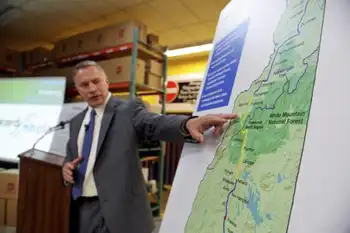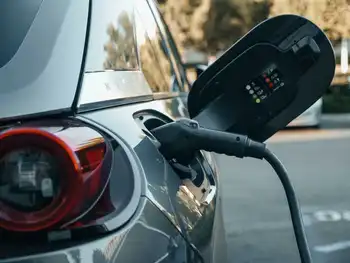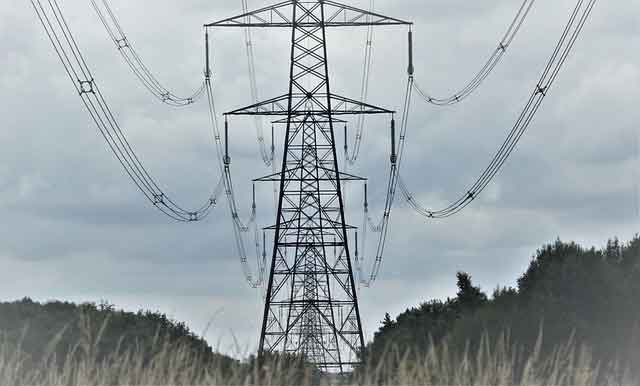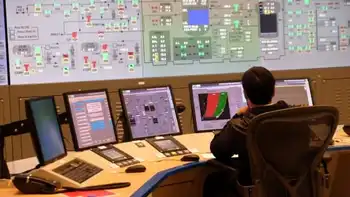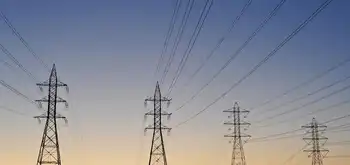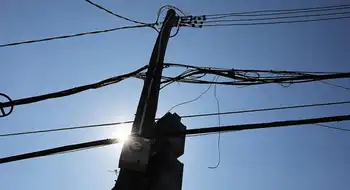Silence on geothermal deafening
By Toronto Star
High Voltage Maintenance Training Online
Our customized live online or in‑person group training can be delivered to your staff at your location.

- Live Online
- 12 hours Instructor-led
- Group Training Available
Today, natural gas is burned to produce the hot steam that's needed to extract bitumen from the tar sands. Alberta's world-famous sands are already the fastest-growing source of greenhouse gases in the country, and on the current growth path, emissions are expected to jump more than four-fold over the next 10 years.
Replacing much of this natural gas with clean, emission-free heat under the Earth's crust, a completely feasible option according to a recent research report out of the Massachusetts Institute of Technology, would go an enormous way toward achieving a halt, and eventually a decline, in Canada's carbon emissions.
The problem is, nobody is making noise about it. Not Ottawa. Not the provinces. Not even environmental groups.
When the Harper government released its much-anticipated "green plan" in late April, there was no mention of geothermal in the oil sands. Gary Lunn, federal minister of Natural Resources Canada, has never publicly touted the option.
The situation is perplexing, to say the least.
On the other hand, Lunn has been quite vocal in pushing nuclear power and its potential as a source of energy in the oil sands. The federal government has also been a big supporter, both financially and politically, of carbon capture and sequestration technologies. The idea here is that the oil sands operators can continue along their current path as long as they capture their carbon dioxide emissions and pump it underground into permanent storage.
But it would be, at best, eight years before a nuclear plant is built in Alberta. Similarly, carbon capture and storage (CCS) technology is years away and would require billions of dollars in research and development before meaningful commercial deployment.
How, in good conscience, can our political leaders be talking about nuclear or CCS without giving equal consideration to a less complex, and possibly more affordable, "clean" option like geothermal?
Not only is geothermal a baseload resource – meaning it can provide power or heat at a predictable level 24 hours a day – but it doesn't leave behind toxic nuclear waste or carry the risk of meltdown. It also doesn't come with the uncertainty associated with carbon storage and the long-term monitoring that's required to make sure CO{-2} doesn't leak out over time, or escape in a single suffocating burst.
A geothermal plant is also dead simple to operate, needing relatively few staff compared to a complicated beast like a nuclear generating station.
"The fact they haven't looked at geothermal and are looking at nuclear, it's very frustrating to me," says Craig Dunn, president of Calgary-based WellDunn Consulting, which works on geological and environmental projects throughout Alberta's oil patch. "The geothermal side of it, for the most part, has been missed."
Geothermal plants work by pumping water into deep wells and exposing it to hot rock below. The water absorbs the heat and is pumped back to the surface. Heat is then extracted from the water to produce steam that can be used on its own or, if hot enough, to generate electricity.
To tap extreme temperatures in the bedrock – somewhere between 150C to 200C – would require drilling five to eight kilometres deep. But many of the processes in the oil sands only require temperatures around 80C, meaning the job could be done at much shallower depths.
"We drill three- to four-kilometre wells in the foothills by the thousands," says Dunn. "It's not like we can't do this. The technology is there, it's available. It's not a cheap option, but when you're looking at it in terms of cost, time to build and energy compared to a nuclear plant, it looks attractive."
One Alberta politician is beginning to ask questions. Dan Backs, an MLA for the riding of Edmonton-Manning, tabled four articles last Thursday in the Alberta legislature to draw more attention to the geothermal option. One of those articles was the Star piece published in February.
He told me in an interview that nuclear power doesn't sit well with his riding, which has a large Ukrainian community. For many, memories of Chernobyl are still vivid and the idea of putting reactors in the oil sands raises a stiff eyebrow. "A lot of people get pretty antsy about that," he says.
Backs says geothermal should be a "slam dunk" and that he plans to nurture the idea in political and local industry circles. "I'll be making the rounds," he says. "I'll continue to push this issue."
Talk of putting nukes in the oil sands may, however, be overblown. Only a couple of oil sand developers, Husky Energy Inc. and France's Total SA, are exploring the option. Most of the noise is coming from Calgary-based Alberta Energy Corp., which in partnership with Atomic Energy of Canada Ltd. wants to build a $5.5 billion nuclear plant in the oil sands by 2016.
In March, a natural resources parliamentary committee advised in a report that any decision to put a nuclear plant in the oil sands should be put on hold until the impact can be assessed and other options are studied.
Meanwhile, major players in the sands – Shell Canada, Suncor Energy and Nexen, to name a few – are doing just that. As members of the GeoPower In The Oil Sands consortium, they are doing their homework, consulting with geologists and engineers, analyzing the business case in a quiet effort to understand geothermal's potential.
One project underway in Fort MacMurray, in partnership with the Centre for Environmental Research in Minerals, Metals and Materials at the University of British Columbia, seeks to tap 80C temperatures two to five kilometres under the surface of the oil sands deposits.
"Although the capital costs to drill wells to that depth are high, the long-term impact on energy use can be substantial on a permanent basis," according to a description of the project.
In other words, like a nuclear plant, a geothermal setup would cost a lot upfront but would pay off over 20 or 30 years because of lower operating costs. The only difference is that geothermal doesn't require a fuel like uranium, which is skyrocketing in price.
Mory Ghomshei, a UBC professor leading the project, says another advantage of geothermal is that a number of smaller, medium-temperature plants can be scattered around the oil sands where low-quality heat is directly needed at well depths of just 3 kilometres. The heat from a big central nuclear plant, on the other hand, can only be transported 10 kilometres by pipeline before losing its energy.
"Geothermal can also be developed much faster than nuclear," says Ghomshei. "A comprehensive study, of course, is needed to evaluate and validate the application." Another geothermal project in Alberta, which could add momentum to the cause, seeks to tap 100C-plus temperatures in old oil wells that have been abandoned – no digging required.
This is all good news. So why does nuclear keep capturing the headlines? Perhaps it's because the geothermal industry doesn't have a public relations machine behind it that's subsidized by the federal government. And, not surprisingly, the oil companies are historically and understandably reluctant to show their cards.
This leaves it to the public to make some noise, and with 2,000 scientists on the Intergovernmental Panel on Climate Change calling for the stabilization of greenhouse gases in the atmosphere by 2015, now is the time to bang the drum.





